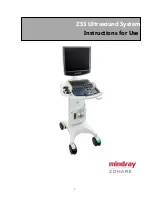
Model 8340A - Service
THIS PAGE SUPERSEDES MANUAL CHANGE SUPPLEMENT PAGE C-171 IN CHANGE 4
REPAIR PROCEDURES
INTRODUCTION
This section contains important information concerning the repair of this instrument. Other
important information is contained in the
"POWER SUPPLY - FAN"
and the
"RF SECTION"
portions of the manual concerning the repair of these assemblies.
This section contains procedures in which one {l'lust handle
assemblies that contain static sensitive components. Handle any
printed circuit board by the edges and never touch finger contacts.
Service this instrument only at a work station that is equipped with
an anti-static surface. Any persons working on this instrument
should wear a grounding strap that provides a path to ground of no
less than
1
Megohms and no more than
2.5
Megohms. All anti-static
safeguards must conform to state and federal safety standards
and statutes.
The thermal connection between two of the instrument heat sinks
and the components mounted to them is the dominant factor in the
component's long term reliability. Be sure to properly apply ther
mal compound (HP Part Number
6040-0454
COO) when installing or
replacing any of these parts. Refer to the POWER SUPPLY - FAN
functional group for thermal compound application procedure.
Use only oil based thermal compound. The use of silicone based
thermal compount may cause serious reliability problems. Silicone
based oil migrates to pass element sockets, switch contacts, or
printed circuit board edge connectors. The compound then tends
to raise contact resistance or electrically isolate the contacts.
Silicone based thermal compounds disperse into the air and
deposit themselves anywhere in the instrument. Applying this
material to a warm component (e.g. a heat sink or pass element)
increases the rate of dispersion.
Use only Rosin Mildly Activated solder when repairing a PC Board.
Rosin Activated solder may cause reliability problems if used.
Never clean solder flux from a PC Board after replacing a compo
nent! This may cause serious reliability problems. The solder flux
that remains on the PC Board is composed of activator that is
completely encapsulated by rosin. When this flux is "cleaned" off,
the rosin and the activator separate and are smeared all over the
PC Board. They also flow under the edge of PC Board traces (all
traces have undercuts along their edges from the etching pro
cess). Once under the edge of a trace the material collects
moisture. The dissimilar metals that make up the trace react to the
clorides in the activator and begin to migrate, disolving the trace.
The activator will also create an electrical path from one trace to
another. This allows metal migration between the two traces. As
REPLACEMENT PAGE
ALL SERIALS
Scans by HB9HCA and HB9FSX
Содержание 8340A
Страница 1: ...Scans by HB9HCA and HB9FSX ...
Страница 113: ...Scans by HB9HCA and HB9FSX ...
Страница 187: ...Scans by HB9HCA and HB9FSX ...
Страница 198: ...Scans by HB9HCA and HB9FSX ...
Страница 269: ...Scans by HB9HCA and HB9FSX ...
Страница 296: ...Scans by HB9HCA and HB9FSX ...
Страница 320: ...Scans by HB9HCA and HB9FSX ...
Страница 321: ...Scans by HB9HCA and HB9FSX ...
Страница 322: ...Scans by HB9HCA and HB9FSX ...
Страница 323: ...Scans by HB9HCA and HB9FSX ...
Страница 324: ...Scans by HB9HCA and HB9FSX ...
Страница 325: ...Scans by HB9HCA and HB9FSX ...
Страница 326: ...Scans by HB9HCA and HB9FSX ...
















































